In the case of collecting seeds with your own hands, you, firstly, will be exactly sure which variety you will receive; secondly, you will independently control the quality of the seed; thirdly, you will be able to prepare as many seeds as you need (only for the next season or with a margin of 2-4 years).
When you can and when not
Did you know? There are more than 25,000 varieties of tomatoes in the world. The smallest varieties may not exceed 1–2 cm in size, and the largest can weigh up to 1.5 kg. The largest fruit is recognized as weighing 3.5 kg, grown in 1986 by the American Golden Graeme.
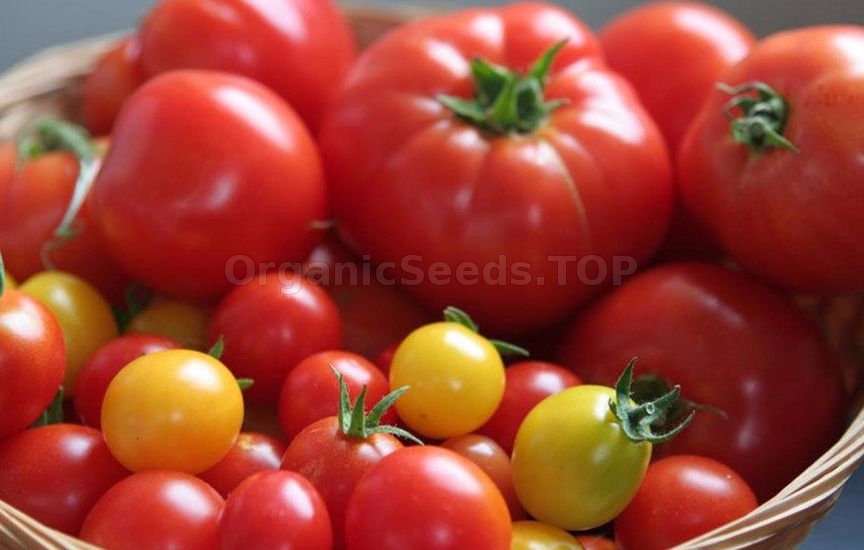
When choosing, you should pay attention to some evaluation criteria:
- tomatoes must be varietal. Tomatoes grown from hybrids (as evidenced by the F1 label on the package) will not produce a crop with parental traits. Hybrids are obtained by many crosses between varieties, and as a result, it may turn out that tomatoes that are not similar to each other will grow in the same area. Moreover, hybrids degenerate completely in 1–2 years;
- tomatoes must be fully adapted to the growing area. It so happens that with a confluence of favorable climatic conditions, varieties zoned for the southern regions can give a good harvest in the northern ones. In such situations, you need to understand that regionalized tomato varieties are more adapted to germination, and the future harvest can be predicted.
In addition to the above evaluation criteria, a summer resident should opt for tomatoes with typical external characteristics (shape, color) and high taste characteristics of this variety.
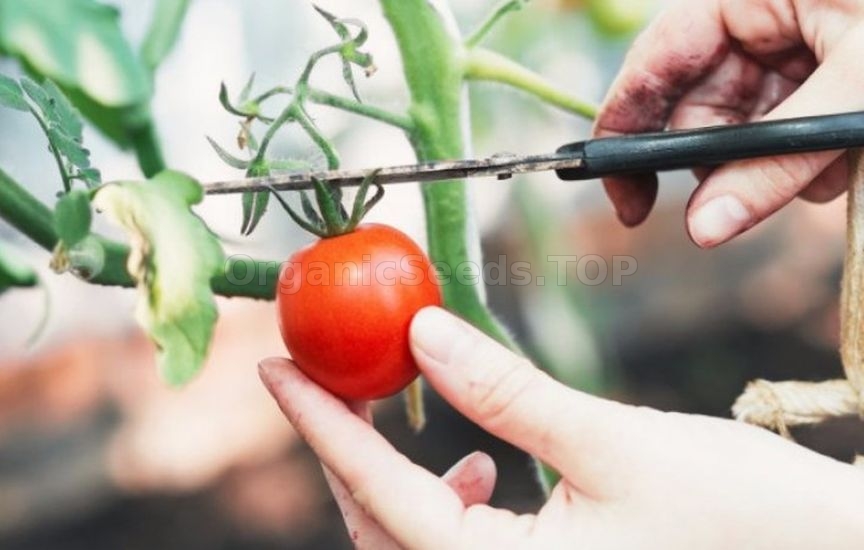
Fruit requirements
Collecting as many tomato seeds as possible at home will help the correct choice of fruits. There are such requirements for fruits:
- fruits are picked only from strong and well-developed bushes without any signs of disease;
- fruits are torn off only from the first lower branch of the bush. The reason is that the flowers on the lower branches fade early, when the activity of the bees is still low, and there is no risk of getting a pollinated own hybrid;
- the fruit must be given time to fully mature on the bush. The main thing here is not to miss this moment, because overripe fruits are not suitable for taking material. When overripe, the fermentation process that occurs in the pulp (the mushy part of the pulp) of the tomato destroys the protective shell of the seed, which contains substances that prevent their germination.
Did you know? The green aerial parts of tomatoes contain glycoalkaloids and are considered toxic. When working with tomato bushes without gloves, there is a possibility of poisoning with manifestations of dizziness, nausea and vomiting.
With this approach to the selection of tomato fruits, the germination of the resulting material, as a rule, meets expectations.
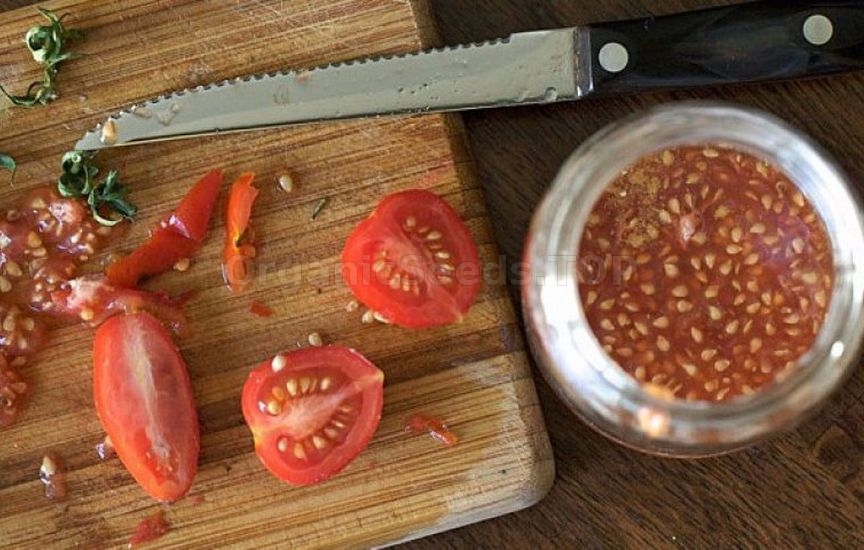
What is needed
The fence is a simple process and does not require special tools or any fixtures. To collect you will need:
- ripe tomatoes;
- cutting knife;
- tablespoon or teaspoon;
- capacity; sieve or gauze cut, folded 3 times;
- paper kitchen towel or napkin; paper bag (cloth bag, etc.) for storage.
Everything you need to collect tomato seeds can be found in every home.
Obtaining process: the usual way
You can collect material for future planting both in the usual way and in a more simplified way.
Good quality and high germination can be provided by the usual method of harvesting by fermentation (fermentation).
The pre-prepared tomato, for unhindered access to the seed chambers, is cut lengthwise in two or cut into slices. The number of chambers in a tomato determines its variety. So, for some varieties, you can get open access to the chambers by cutting it into 4 parts, while others require finer cutting.
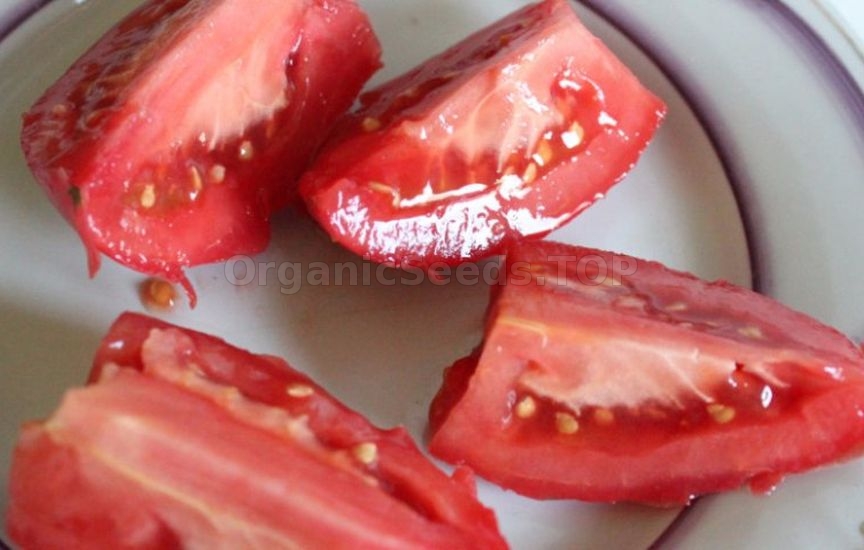
We collect seeds
Having cut the tomato, the liquid from the chambers must be removed into a prepared container. You can correctly collect the contents both with a regular spoon (tablespoon or tea) and with your fingers. Any dishes (glass, porcelain, plastic) are suitable for these purposes. There should be enough juice from the tomato to completely cover the seeds.
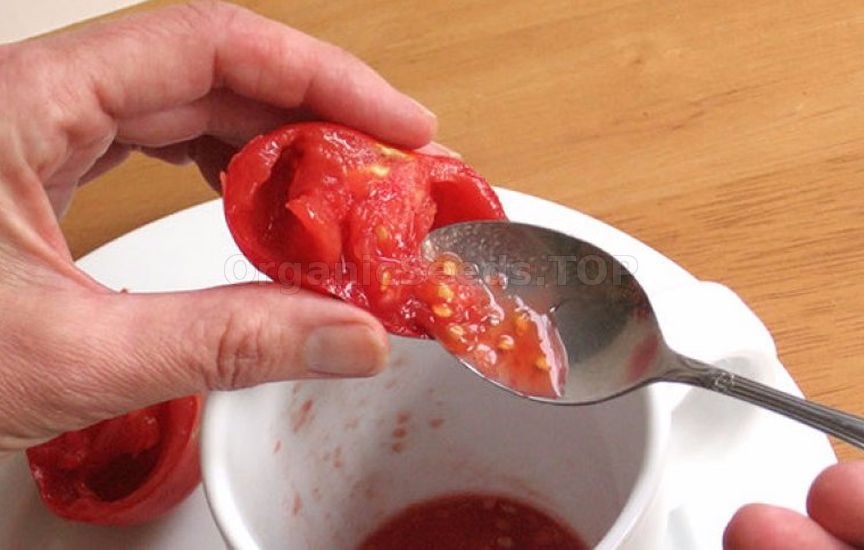
Fermentation
For the fermentation process, the container with the contents must be covered with a leaky lid and set aside for a while. Depending on climatic conditions, this process in different regions can take a different amount of time in the range of 24–48 hours.
Important! In warm or hot conditions, the fermentation process is much faster. It is important not to miss the moment of its commission, otherwise the seeds will begin to germinate and become unusable.
The completion of the process is indicated by the appearance of air bubbles and a film on the surface. At the same time, the juice brightens, and the seeds sink to the bottom.
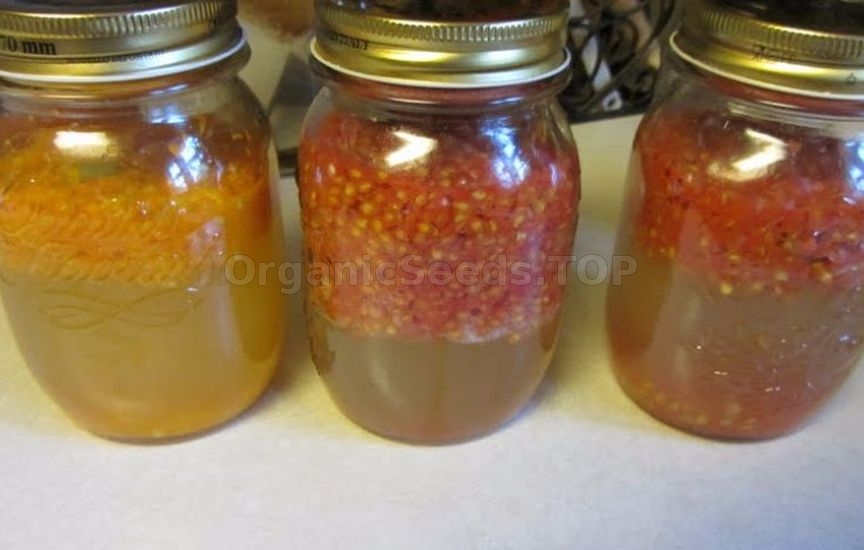
Seed rinsing
After fermentation has taken place, the future planting material must be thoroughly washed. For this, the contents of the container are poured into a sieve and washed with running water. When rinsing, it is important to separate any remaining pulp.
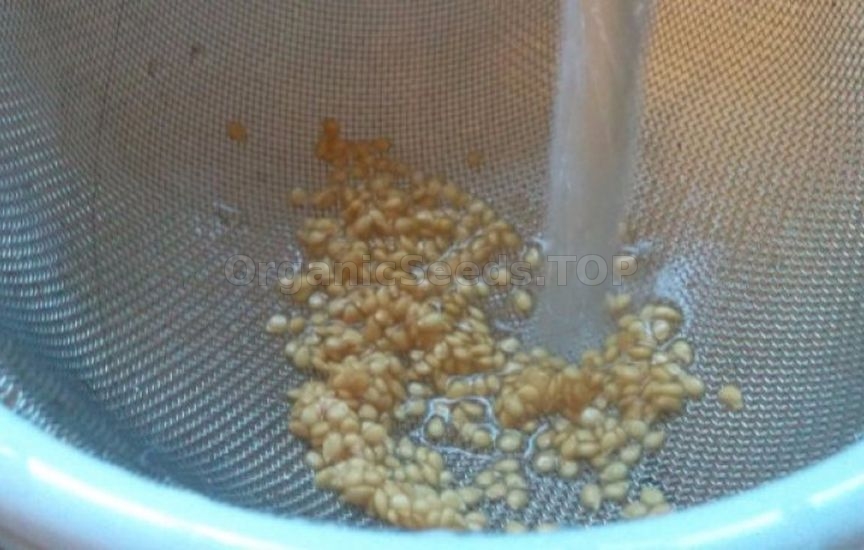
Drying of planting material
After thoroughly rinsing the seeds, the excess liquid must be allowed time to drain by placing the sieve on a paper towel. After drying a little, the remains must be thoroughly dried on a flat surface. For these purposes, it is better to use a shallow plate (a plastic one is also suitable), from such a surface it will be much easier to collect seeds. When preparing different grades, care must be taken so as not to confuse or accidentally mix the material, and containers, for reliability, must be signed.
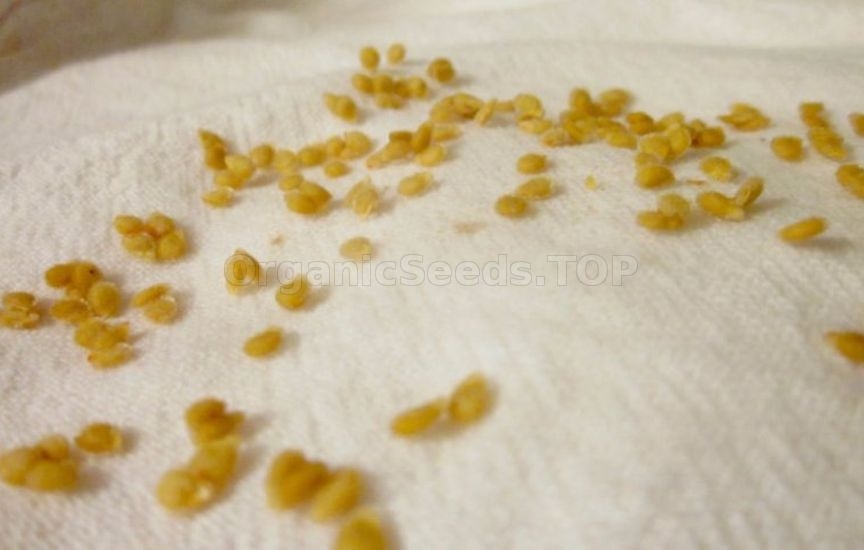
The seeds should be allowed time to dry completely. This process will take 5 to 7 days. At the end of drying, the planting material is placed in signed paper bags (cloth bags, etc.) and stored in a dark, cool room until spring.
During storage, it is necessary to avoid sudden temperature changes and changes in humidity.
The fast and easy way
Some circumstances, such as cramped living conditions or lack of free time for the gardener, do not always make it possible to harvest tomato seeds at home in the usual way. In such cases, you can resort to an easier, faster method. This only requires 3 things: a ripe tomato, a knife, and a paper kitchen towel (napkin or plain paper).
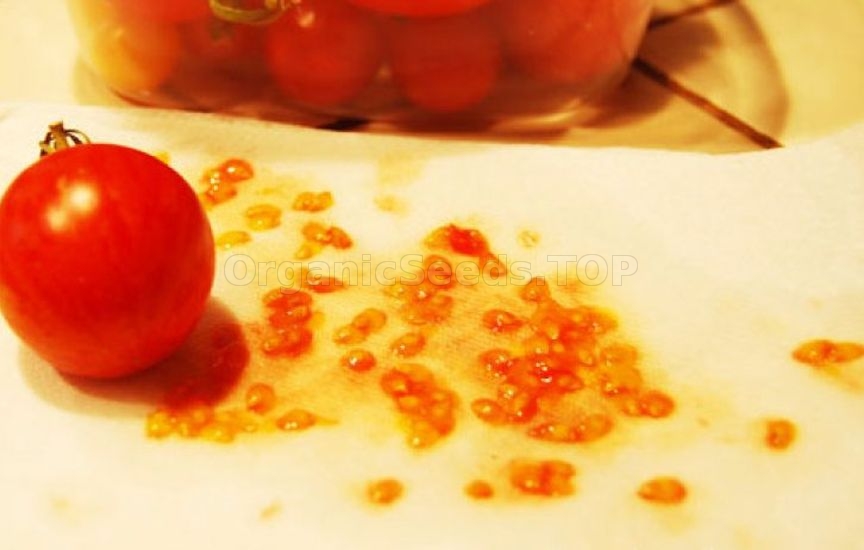
The contents extracted from the cut tomato, together with the pulp, should be smeared on a paper towel and set aside to dry for 5–7 days. At the end of drying, each seed must be separated from the towel by hand and folded into a prepared bag (sack) for storage. The quality of the harvested material in a quick way will be slightly worse than with the fermentation method, but the germination rate will remain at an acceptable level.
Important! It is not recommended to store seeds in glass containers and in plastic bags. This storage will lead to moldiness.
Helpful hints and tips
Each summer resident has his own procurement methods, time-tested and trial and error. But their essence is the same, only the approaches to some processes differ.
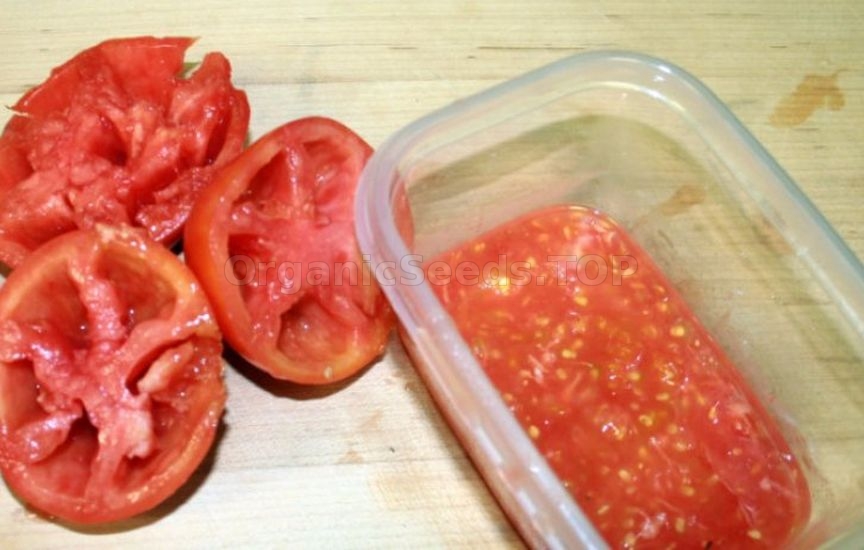 Procurement tips:
Procurement tips:
- unripe (brown) fruits can be used for material collection. First, you need to give them time to ripen in a room for 1-2 weeks;
- to separate high-quality material from defective seeds, washed after fermentation, seeds must be placed in a saline solution (1 teaspoon of salt per 1 glass of warm water). Landing material floating on the surface - unsuitable for landing;
- the future planting material can be pre-disinfected with laundry soap. To do this, soak it for 30 minutes in soapy water (dissolve 1 tablespoon of 72% laundry soap grated on a grater in a glass of water). You can also carry out disinfection with a weak (pink) solution of potassium permanganate. It is imperative to complete the disinfection process by thoroughly rinsing with water;
- You can dry the seeds on a roll of toilet paper, placing them at regular intervals. After drying, such material must be saved without separating it from the roll, and in the spring, planted on seedlings along with paper;
- sowing qualities will be preserved better if the seeds are stored in conditions of humidity not higher than 55% and temperatures from 0 ° С to 5 ° С.
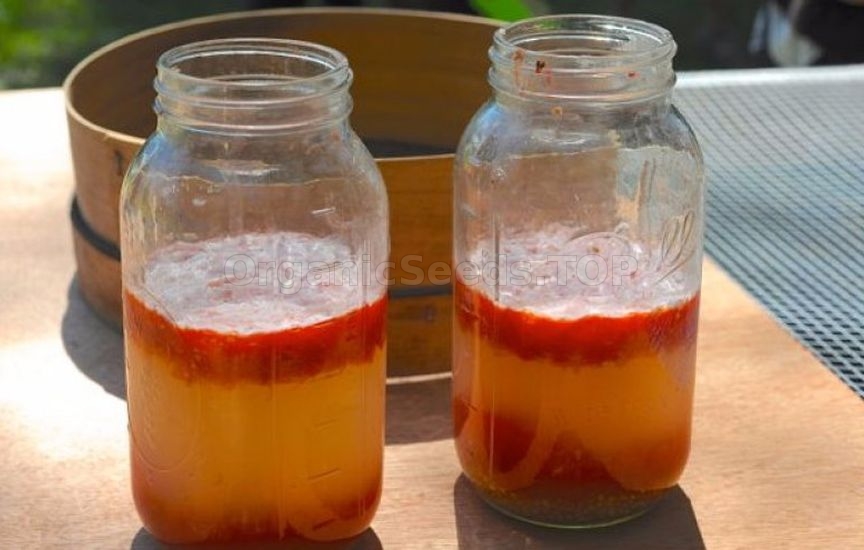 Recommendations for procurement:
Recommendations for procurement:
- to harvest future planting material, you do not need to take fruits from a bush, on which small and large fruits ripen at the same time;
- for preparation, processing and storage, do not use aluminum or iron utensils. Oxidation processes that take place have a negative effect on the viability of seeds;
- during fermentation, water must not be added to the contents of the containers. Water will help seed germination;
- do not store tomato seeds for more than 4 years. The maximum germination rate decreases significantly with each subsequent year;
- to restrict air access and prevent premature germination, the seed bags can be wrapped in foil during storage.
Despite the unnecessary trouble that accompanies the procurement of future planting material, many gardeners and summer residents want to keep the tomato variety they like. How tomato seeds are collected at home determines their future germination.
From the above, it becomes clear that seeds collected by hand are more germinable, and the acclimatization and regionalization of previous generations guarantees strong and healthy seedlings.











